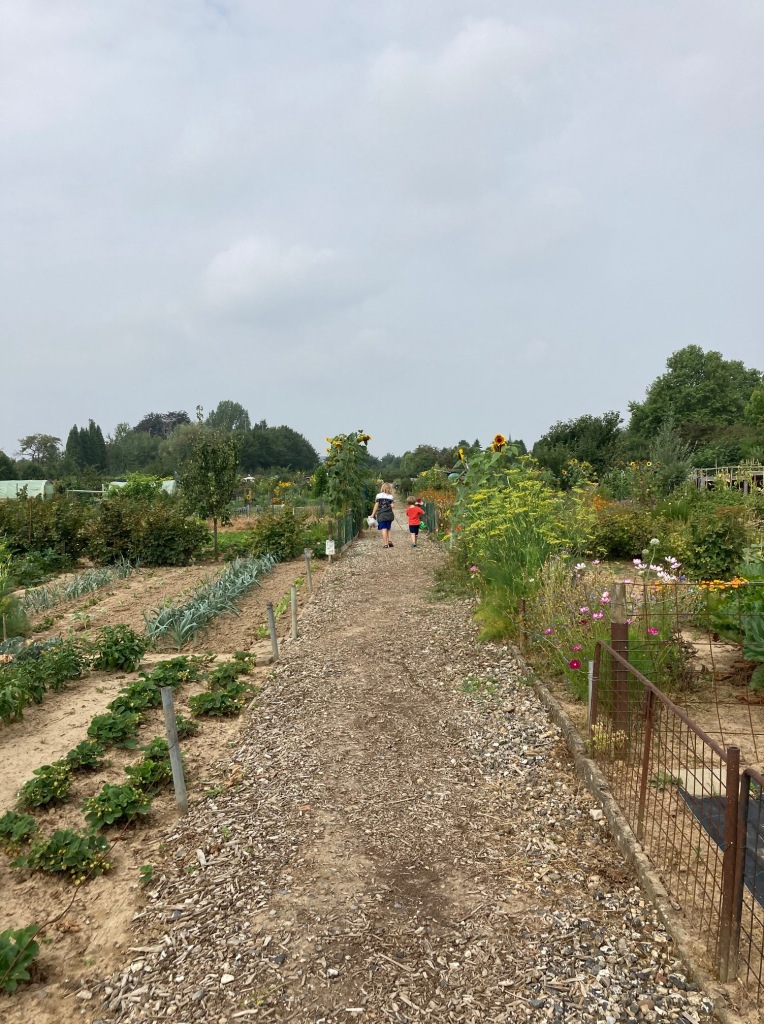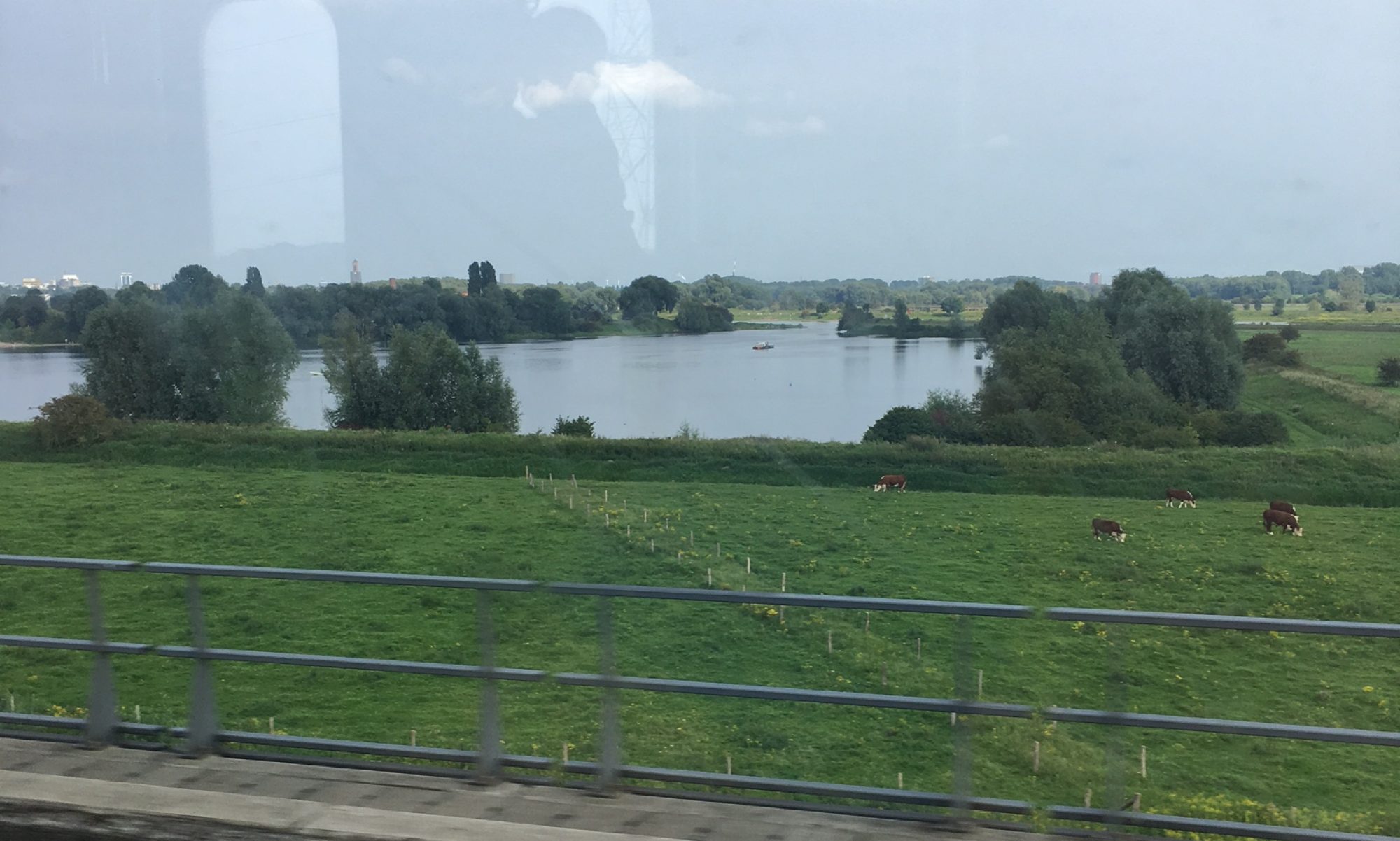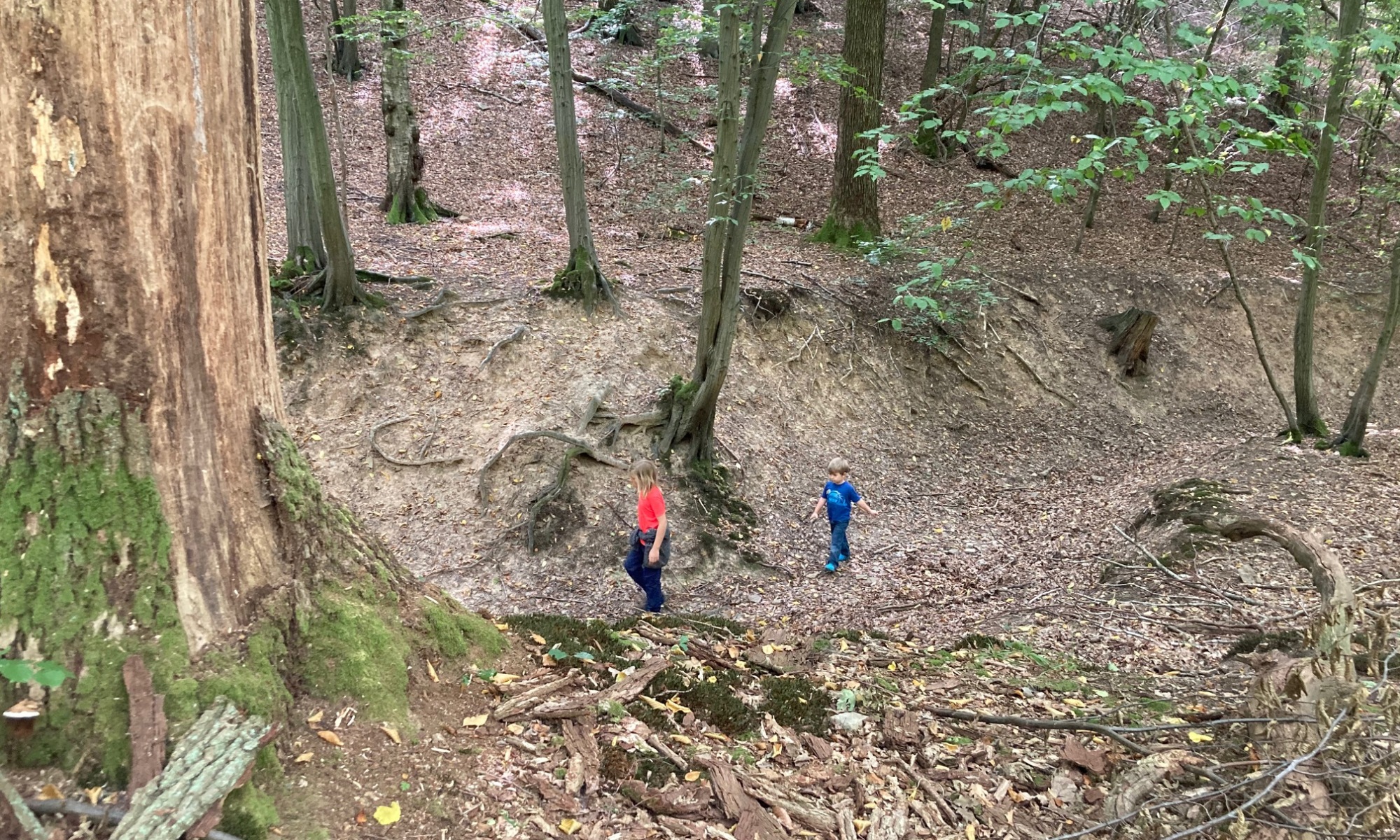Today is Sint Michael’s Dag, Michaelmas, which is the holiday of bravery and courage in the anthroposophical/Waldorf/Steiner world. We’ve plunged into that world more than I’d ever expected, as Orri is now attending a public Waldorf primary school, and we’re learning about its rhythms, rituals, holidays, traditions. It is a gorgeous philosophy in all kinds of ways, especially the intersections between Steinerian ideas about what children need and general Dutch notions of childhood, which feel at once ultra-nurturing and innocent and also all about bravery, independence, and encountering the wider world.
Today, on Sint Michael’s Feestje, Orri’s class will go to the forest. They will be given a task, a small act of bravery, to accomplish. They will be expected to summon their deep courage.
Last year, at his Steiner preschool, the Sint Michael’s Feestje task was presented by an old, witchy-looking woman sitting at the end of a long corridor of branches in a dark, overhung corner. No one told the children in advance that there was going to be a task. There was no anxiety built up by anticipation. We just gathered as families, and it became clear that the old woman at the end of the tunnel was polishing apples – beautiful red apples. Each child must walk the tunnel alone to hold out their hand and to receive their apple. No one gave the children a pep talk. No one told them that they didn’t have to do it if they were afraid. One by one, children began to walk through the opening and down the corridor of branches, clearly summoning their bravery, approaching the witch. One by one, each child returned with their apple, smiling, savoring the fruits of their quest. Some children cried, and parents comforted them. No one either forced them or gave them a way out. Three-year-old Orri was pretty intimidated. In the end, 9-year-old Iver held his hand and walked with him to the witch and back again. They both got their apple.
Although Sint Michael’s Feestje is not a standard Dutch holiday, practices requiring kids to summon courage abound here. Older kids and teenagers often engage in a “dropping:”
“…in which groups of children, generally pre-teenagers, are deposited in a forest and expected to find their way back to base. It is meant to be challenging, and they often stagger in at 2 or 3 in the morning.”
Notably: At night, in the dark, in small groups of kids. No adults, no cell phones. And it goes on as long as it takes.
There is also the practice of smaller children carrying lit candles in ceremonies and of older children jumping over fires as a rite of passage. And there’s a summer tradition of sleepaway camps where children are given pallets and building materials and expected to construct a house for themselves to sleep in.
To American eyes, this might all seem like neglect or cruelty or at least unnecessary risk. It might sound like ignoring children’s fears or pushing them too far, too fast, too soon. At Iver’s school, there’s a camping trip for all children at year-end. If it were a Dutch school, no one would question it, and no one would opt out. But because it’s an international school with families from many different cultures, the school handbook states explicitly: “Please DO NOT allow your child to refrain from participating. All children must join for this important activity.” In other words, do not pre-program fear or anxiety with your children. Do not tell them that because they’re uncomfortable or afraid, they can opt out. This is the expectation. They can do hard, potentially scary, things.

This is one thing I have come to love about Dutch culture: There is a general absence of fear, especially when it comes to kids and childhood, and a deep belief in the capacities of children. These people believe in teaching through experience and in giving ample space for kids to expand. No one telegraphs fear to them. No stranger danger, no “you’re not ready yet.” None of that insidious “safety first” culture that tells kids they should avoid risks, play it safe, stay close to home, that gasps dramatically when a child falls down, that hovers around playground equipment ready to catch a falling child. Just as importantly, no one judges parents for encouraging their kids to be independent. It is assumed that parents’ and schools’ and aftercare programs’ and camps’ jobs are to raise adults, citizens, high-functioning humans – not long-term dependents.
No one here is talking about a wave of anxiety related to the pandemic. Kids aren’t experiencing it, probably because adults generally aren’t either. In general, adult anxiety becomes children’s anxiety – what we grownups absorb from the culture at large or our own histories, we bring into our own homes and schools. What we bring into our homes and schools, our children take on as their own.
Let me be clear: I am not blaming parents from other cultures where fear predominates. In the US in particular, there are complex truths underlying the deep culture of fear. Truths like that Black American parents telegraph fear to their children in an attempt to keep them alive in a country that actively seeks to kill them. And that gun violence in the US is a profoundly terrifying, real epidemic. As a Dutch expat writer living in the US wrote in an incredible essay called Safer at Home:
“The United States excels at making people believe that its systemic failures are their individual shortcomings.”
Certainly I could not resist this fear when we lived in the US, try as I might. Just when I’d feel like I was achieving escape velocity from my own fear, someone would stop at the end of my driveway and tell me I was being unsafe by running to the bathroom while my child played alone in our front yard. Or someone else would tell me I was being unsafe because my 3-year-old was biking very fast down the street. Or I’d hear another parent brightly singsong “safety first!” to their intrepid, curious toddler doing something normal, and the fear motivating all of us suddenly felt inescapable. The result always felt to me like this (again from Safer at Home):
“I’ve begun to recognize the pall of that fear veiling my friends, draining them like a Dementor.”
And so why, the conventional thinking goes, would we willing expose our beloved children to risks? Why would we not foster the fear that might keep them safe? (And to my American friends and family parenting kids of color, I am not speaking to you, because I cannot know what your experience is. I am speaking to relatively safe white middle-class people who have been terrorized into “safety” by the culture of fear around them.)
Risks are where children learn where their limits are and what they are capable of. Terrifying as risks are, especially to the adults watching on, the risks are what we’re supposed to help our children face during their years with us. Living in this culture, increasingly I can see that our job with kids is not to map out the risks for them, nor to give them a plan. It’s not to forcefully coach them and demand that they do something. Oftentimes, the less talking, the better. (Quite a lesson for me. I am a word witch, and I love little as much as the “right words,” copious amounts of them.) Instead, our job is to stand behind our children, to breathe the wind of our confidence into their sails, to stay steady and to trust in their capacity and to stand back as they walk the long corridor – to retrieve their apple or to slay their dragon.
I wish that I’d known this in my early years of parenting. I wish that I’d been able to believe in it. My younger son, now 4, has spent more than half his life in the Netherlands, and he seems perfectly capable of doing whatever he so chooses with a sureness that impresses me. He has been steeped in confidence, despite his American parents.
Meanwhile my older son, American boy that he still is, is imminently capable yet very anxious – steeped as he was in the decades-long pandemic of American anxiety. Our anxiety state. I worry now sometimes that I stood over his crib, breathing my new-parent phantasms of worry into his tiny spirit. Ten years later, he is not debilitated, but he avoids risks that he is clearly more-than-ready for. And he is just as worried about other adults’ responses to his risk-taking as he is about what might happen to him. “This isn’t America,” I have to say to him. “No adult is going to tell you that you’re too young to do something. No one will demand to know where your parents are. You can ask anyone for help if you need it.” He understands this. But still. Old habits, the tenor of your own culture, die hard. I have hope for him still that he will take ever more age-appropriate risks – that there might still be a dropping or a house-building summer camp in his future. That the fear absorbed by his mother from her own culture will be something that he can transcend.
Why bravery? Because our species needs it now more than ever. The months and years ahead are going to test all of us, pandemic or no. We already feel stretched, many to the breaking point. But we are flexible, capable and resilient, more than we know. More than ever, we need to know our own capacities as we stare down the terror. We need to stand behind each other, breathing confidence into each other’s sails, staying steady, as we take frightened but purposeful steps into the dark forest, in search of apples or of dragons.


